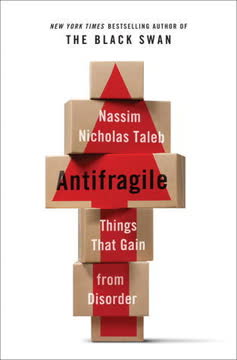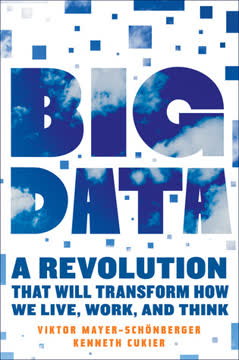つの重要なポイント
1. 進歩と革新には失敗が不可欠
「進化はあなたよりも賢い。」
失敗を受け入れる。 革新と進歩は、多くの試行錯誤と失敗から生まれることが多い。市場経済、科学的発見、技術の進歩はすべて、試行錯誤のプロセスに依存している。成功した企業や個人は、失敗が避けられないだけでなく、成長のために必要であることを理解している。
失敗から学ぶ。 ペニシリンや電子レンジのような多くの画期的な発明や発見は、偶然の失敗や予期しない結果から生まれた。失敗を分析し、そこから学ぶことで、将来の取り組みで成功する可能性を高めることができる。
成功した失敗の例:
- ポストイット(失敗した接着剤)
- バイアグラ(失敗した心臓薬)
- WD-40(水置換フォーミュラの40回目の試み)
2. 複雑なシステムでの試行錯誤による適応
「石を感じながら川を渡る。」
複雑さを受け入れる。 経済、生態系、社会のような複雑なシステムでは、結果を確実に予測することは不可能である。厳格な計画や専門家の意見に頼るのではなく、継続的な適応と実験のアプローチを採用すべきである。
適応戦略を実施する。 組織や個人は、柔軟性と学習を可能にする戦略を実施することで利益を得ることができる。これには以下のような技術が含まれるかもしれない:
適応的問題解決の技術:
- 小規模なパイロットプロジェクトの実施
- 様々な文脈でのA/Bテストの使用
- 迅速なプロトタイピングと反復の実施
- 多様な視点と解決策の奨励
3. 実験と新しいアイデアのための安全な空間を作る
「これ以上簡単なことはない!」
革新を促進する。 新しいアイデアを安全に探求し、テストできる環境を作ることは、進歩にとって重要である。これはビジネスや科学からガバナンス、個人の成長に至るまで、さまざまな分野に適用される。
「スカンクワークス」を実施する。 多くの成功した組織は、通常の業務の圧力や制約から離れて、革新的な新しいアイデアを開発するための専用のユニットやプロセスを持っている。これらの安全な空間は、より大きな創造性とリスクテイクを可能にする。
革新に優しい環境の例:
- Googleの「20%タイム」個人プロジェクト
- 3Mの「15%文化」実験
- ロッキード・マーティンのオリジナルスカンクワークス
- 学術的なサバティカルと研究助成金
4. 問題解決における多様性と選択を奨励する
「新しいアイデアを探し、新しいことを試みる。」
アプローチを多様化する。 複雑な問題に直面したとき、同時に複数の解決策を探ることが有益である。これにより、効果的な解決策を見つける可能性が高まり、最適でないアプローチに固執することを避けることができる。
選択メカニズムを実施する。 多様な解決策を生成した後、最も成功したものを特定し、促進するための効果的な方法を持つことが重要である。これには以下のような方法が含まれるかもしれない:
解決策の選択方法:
- 厳密なテストと評価
- 市場のフィードバックと顧客の意見
- ピアレビューと専門家の評価
- データ駆動のパフォーマンス指標
5. 適応性を高めるための意思決定の分散化
「時間と場所の特定の状況に関する知識。」
現地の意思決定者に権限を与える。 急速に変化する環境では、状況に最も近い人々が最も良い情報を持ち、迅速に対応する能力を持っていることが多い。意思決定を分散化することで、より効果的で機敏な組織を作ることができる。
中央の調整と現地の自律性のバランスを取る。 分散化は多くの場合有益であるが、ある程度の中央調整が通常必要である。各特定の文脈に適したバランスを見つけることが課題である。
成功した分散化の例:
- ホールフーズマーケットの権限を持つ店舗チーム
- 米軍のミッションコマンドの採用
- Wikipediaの分散編集システム
- オープンソースソフトウェア開発コミュニティ
6. 心理的障壁を克服して失敗から学ぶ
「自分で作り上げた現状に挑戦する。」
認知バイアスを認識する。 人間の心理は、失敗から学ぶことを難しくすることが多い。私たちは失敗を否定したり、損失を追いかけたり、過去の決定を実際よりも成功したものとして再解釈する傾向がある。
バイアスを克服するための戦略を開発する。 失敗から効果的に学ぶためには、自己認識を育み、自然な傾向に対抗する実践を実施する必要がある。
失敗からより良く学ぶための技術:
- 他者からの正直なフィードバックを求める
- 決定と結果の詳細な記録を保持する
- 過去の失敗を定期的にレビューし分析する
- 潜在的な問題を予測する「プレモーテム」を実践する
7. フィードバックループを使用してシステムとプロセスを改善する
「より良い世界を設計しようとするのではなく、より良いフィードバックループを作るべきだ。」
効果的なフィードバックメカニズムを実施する。 複雑なシステムでは、最初から完璧な解決策を設計しようとするよりも、良いフィードバックループを作ることに焦点を当てる方が生産的であることが多い。
フィードバックサイクルを短縮する。 フィードバックが速く正確であるほど、システムは迅速に適応し改善することができる。これはソフトウェア開発から公共政策に至るまで、さまざまな文脈に適用される。
効果的なフィードバックループの例:
- アジャイルソフトウェア開発手法
- 製品設計における継続的な顧客フィードバック
- 製造におけるリアルタイムのパフォーマンス指標
- 開発経済学におけるランダム化対照試験
8. 個人の成長における多元主義と規律のバランス
「規律ある多元主義。」
多様な経験を探求する。 個人の成長は、新しいことを試み、多様なアイデアや経験に身を置くことから生まれることが多い。この「多元主義」は、新しい機会を発見し、広い視野を持つのに役立つ。
効果的なものに集中する。 探索が重要である一方で、何かがうまくいっていると認識したら、それにコミットすることも重要である。この「規律」は、熟練を深め、意味のある進歩を達成するのに役立つ。
探索と集中のバランスを取るための戦略:
- 新しい経験のために定期的な時間を確保する
- 目標とコミットメントを定期的に再評価する
- スキルと興味のポートフォリオを開発する
- 選ばれた分野での意図的な学習を実践する
9. 気候変動対策としての炭素価格の導入
「温室効果ガスは高価である。」
市場の力を活用する。 炭素排出に価格を設定することで、複雑な規制や細かい管理を必要とせずに、個人や企業が炭素フットプリントを削減するインセンティブを生み出すことができる。
分散型の問題解決を許容する。 炭素に価格を設定することで、中央集権的な計画に頼ることなく、何百万人もの人々の創造性と革新を引き出すことができる。
炭素価格の利点:
- エネルギー効率と革新を奨励する
- 排出削減の方法に柔軟性を提供する
- 長期的な計画のための明確な経済的シグナルを作る
- 他の気候イニシアチブのための収益を生み出すことができる
10. 緊密に結合されたシステムを分離して大規模な失敗を防ぐ
「進化はあなたよりも賢い。」
システミックリスクを認識する。 コンポーネントが高度に相互依存している緊密に結合されたシステムでは、小さな失敗がすぐに大規模な災害に発展する可能性がある。これは特に金融や重要なインフラの分野で関連性が高い。
安全装置とブレークポイントを実施する。 意図的なブレークポイントを導入したり、コンポーネント間の接続を緩めることで、システムをショックに対してより強靭にし、局所的な失敗がシステミックな危機に発展するのを防ぐことができる。
システムの分離戦略:
- 株式市場における金融「サーキットブレーカー」の実施
- 明確なインターフェースを持つモジュラーシステムの設計
- 冗長性とバックアップシステムの作成
- 失敗を隔離するための明確なプロトコルの確立
最終更新日:
FAQ
What's Adapt: Why Success Always Starts with Failure about?
- Focus on Failure and Success: The book explores how failure is an essential part of the process of adaptation and success in various fields, including economics, business, and personal development.
- Trial-and-Error Methodology: Tim Harford emphasizes the importance of trial-and-error as a method for problem-solving, arguing that embracing failure can lead to innovative solutions.
- Real-World Examples: Harford uses a variety of real-world examples, from the development of the Spitfire to microfinance initiatives, to illustrate how adaptation occurs through experimentation and learning from mistakes.
Why should I read Adapt: Why Success Always Starts with Failure?
- Insightful Perspective: The book provides a fresh perspective on the role of failure in achieving success, challenging the conventional wisdom that success is solely the result of careful planning and execution.
- Practical Applications: Readers can apply the lessons from the book to their own lives, whether in business, government, or personal endeavors, making it relevant to a wide audience.
- Engaging Writing Style: Tim Harford's engaging narrative style, combined with compelling anecdotes, makes complex economic concepts accessible and enjoyable to read.
What are the key takeaways of Adapt: Why Success Always Starts with Failure?
- Embrace Failure: One of the main messages is that failure should not be feared but embraced as a necessary step towards innovation and success.
- Importance of Variation and Selection: Harford discusses the concepts of variation and selection, emphasizing that successful adaptation often requires trying multiple approaches and learning from the outcomes.
- Complexity of Modern Problems: The book highlights the complexity of contemporary issues, suggesting that simple solutions are often inadequate and that adaptive strategies are essential.
What are the best quotes from Adapt: Why Success Always Starts with Failure and what do they mean?
- “The curious task of economics is to demonstrate to men how little they really know about what they imagine they can design.”: This quote underscores the limitations of human foresight in complex systems, suggesting that adaptability is more valuable than rigid planning.
- “Cross the river by feeling for stones.”: This metaphor illustrates the idea of navigating uncertainty through incremental steps and experimentation rather than attempting to leap across the river all at once.
- “If we don’t know whether we are doing any good, then we are not any better than the medieval doctors and their leeches.”: This statement emphasizes the importance of evidence-based practices in development and the need for rigorous evaluation of interventions.
How does Tim Harford define adaptation in Adapt: Why Success Always Starts with Failure?
- Adaptation as a Process: Harford defines adaptation as a continuous process of learning and adjusting based on feedback from the environment, rather than a one-time event.
- Trial-and-Error Framework: He advocates for a trial-and-error framework where individuals and organizations experiment with different strategies, learn from failures, and refine their approaches.
- Dynamic Learning: Adaptation involves dynamic learning, where the ability to pivot and change direction based on new information is crucial for success in complex situations.
What role does failure play in success according to Adapt: Why Success Always Starts with Failure?
- Failure as a Teacher: Harford posits that failure serves as a critical teacher, providing valuable lessons that can lead to better decision-making in the future.
- Encouraging Innovation: By accepting failure, individuals and organizations create an environment that encourages innovation and creativity, allowing for the exploration of new ideas.
- Resilience Building: Learning to cope with and learn from failure builds resilience, which is essential for navigating the complexities of modern life and business.
What is the significance of the Palchinsky principles in Adapt: Why Success Always Starts with Failure?
- Three Key Principles: The Palchinsky principles emphasize the importance of seeking out new ideas, conducting experiments on a manageable scale, and learning from feedback to improve outcomes.
- Encouraging Experimentation: These principles encourage a culture of experimentation where failure is seen as a part of the learning process, rather than a setback.
- Application Across Fields: Harford suggests that these principles can be applied in various fields, from business to government, to foster innovation and effective problem-solving.
How can organizations implement the ideas from Adapt: Why Success Always Starts with Failure?
- Foster a Culture of Experimentation: Organizations should create an environment where employees feel safe to experiment and fail, encouraging innovation and creative problem-solving.
- Implement Feedback Loops: Establishing robust feedback mechanisms allows organizations to learn from their experiences and adapt their strategies based on real-world outcomes.
- Encourage Diverse Perspectives: By valuing diverse viewpoints and encouraging open dialogue, organizations can enhance their ability to adapt and respond to complex challenges effectively.
How does Adapt: Why Success Always Starts with Failure relate to climate change and individual behavior?
- Individual Impact on Climate: Harford discusses how personal choices, such as dietary habits and transportation methods, can significantly affect carbon emissions.
- Complexity of Eco-Friendly Choices: The book highlights the challenges individuals face in making environmentally friendly choices, as many decisions are not straightforward.
- Encouraging Informed Decisions: By understanding the complexities of climate change and individual behavior, readers can make more informed choices that contribute positively to the environment.
What are some examples of successful adaptation in Adapt: Why Success Always Starts with Failure?
- The Toaster Project: Harford discusses Thomas Thwaites's attempt to build a toaster from scratch, highlighting the complexity and interconnectedness of modern technology.
- The Spitfire: The development of the Spitfire during World War II serves as an example of how a flexible approach to design and adaptation can lead to significant breakthroughs.
- Microfinance Initiatives: Harford uses the story of Muhammad Yunus and the Grameen Bank to illustrate how trial-and-error methods can lead to successful solutions for poverty alleviation.
How does Adapt: Why Success Always Starts with Failure address the concept of disruptive innovation?
- Understanding Disruptive Technologies: Harford explains that disruptive innovations often emerge from unexpected sources and can challenge established market leaders.
- Psychological Barriers to Adaptation: The book highlights the psychological and organizational challenges that prevent established companies from embracing disruptive innovations.
- Encouraging a Flexible Mindset: To thrive in a landscape of disruptive innovation, organizations must cultivate a flexible mindset that embraces change and experimentation.
レビュー
本書『Adapt』は、失敗と実験を受け入れることで成功を収めるという説得力のある主張に対して、概ね好意的な評価を受けている。読者は、ハーフォードの魅力的な文体、多様な例、そして実践的なアドバイスを高く評価している。一部の読者は、本書の長さと繰り返しが多い点を批判し、もっと簡潔にまとめられたのではないかと感じている。ビジネスから個人生活に至るまで、さまざまな分野で複雑な問題に適応することの探求は、多くの人々に共感を呼んでいる。特定のセクションを退屈に感じる人もいるが、大多数は本書の核心メッセージが価値があり、考えさせられるものであると同意している。
Similar Books



















